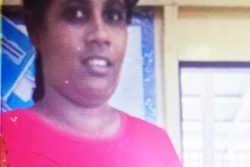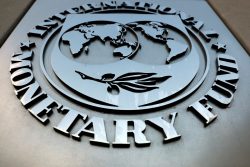By Annalee Davis Annalee Davis is a visual artist living and working in Barbados. Her first independent film, On the Map, is a film about Caribbean migration that was partly shot on location in Guyana.
(This is one of a series of fortnightly columns from Guy-anese in the diaspora and others with an interest in issues related to Guyana and the Caribbean)
The film took seed in my mind thirteen years ago when a woman came to work with us in Barbados. She received technical training in Guyana as a welder, and joined the eighty-nine percent of Guyanese with more than twelve years education who left. I was struggling to continue making work as a visual artist while being a new mother. So every day for several years, she came to our home to provide domestic help.
Three years on, we relocated to Trinidad. Our helper remained in Barbados to develop an import shop in Bridgetown. She brought in salt fish, shrimp, gold and miscellaneous items from Guyana and cooked Guyanese food which she sold daily. Several years on, determined to give her daughters more opportunities, they moved to the USA. Although hesitant to live in the USA, she saw no possibilities for her children within the Caribbean. In New York City, she continues to work as a nanny and the kids are excelling in school with plans for College.
Several years later, my family returned to Barbados and we hired another Guyanese woman to take care of the new born. This young woman had finished a year at the University of Guyana reading Sociology and Political Science. Unable to afford the tuition, and without a network to support her, she too left Guyana in search of opportunity.
Through my relationships with these two women, I developed some understanding of what migrants experience while moving within Caricom. Many work seven days a week, live underground, not wanting to be exposed to the possibility of being turned into the immigration office. Rumour on the street in Barbados is that locals receive cash for declaring the names of “illegal Caricom migrants”!
While I observed Caribbean migrants working, saving and remitting money home to support families, I thought about three main challenges to the Caribbean becoming a truly integrated region – (i) the state’s top-down approach to integration which works best for businesses which want to move employees throughout the region, meanwhile forgetting those at the lower end of the socio-economic ladder (ii) the ballooning cost of regional air travel – flights between Trinidad and Barbados cost US$325.00, and often more, and (iii) the ways in which Caribbean nationals display concern about the “problem” of integration. There are perceptual barriers to our people becoming truly integrated. We need to find a language to speak about the fears and the concerns – real or perceived.
As a visual artist, I make works which question notions of home, longing, belonging, and migration. Two years ago, I chose to make On The Map to give voiceless Caricom migrants an opportunity to be heard and to allow regional creative minds to speak about building a Caribbean family, community and society. One interviewee suggests that we think not in binary terms about “other” CARICOM migrants, but in terms of relationships of difference. By “relationships of difference” the suggestion is that we might look for the potential spaces that can be found in between the divisions of us/them, Black/White/Indian, Christian/Hindu/Muslim, local/foreign, insider/outsider.
The result is a thirty-two minute experimental documentary which exposes tensions between a boorish woman, shouting “Trinidad burning down one another….you can see? We don’t want ‘dem here! Dey go’ burn we out too!” …and a young woman who speaks about the difficulty of being an undocumented immigrant, and a man who speaks about leaving home when his son was a baby and his first return back home, six years later.
Misunderstanding current intra-regional migratory practices as individuals breaking the law by illegally crossing borders, is not the full picture. We might also see this as Caricom nationals putting their security at risk to offer themselves and their children something more, because failing nation states give them no option but to flee. The region needs to speak about this problem of failing nation states.
This “contemporary middle passage” scenario of Caribbeans travelling over their own waters, leaving their homes and splitting their families apart, contributes to a breakdown in society at the most basic level. People generally don’t want to leave home; they do so because they feel they have no choice but to go somewhere else to be able to make a better life.
The loss of sixty, seventy and eighty percent of the best trained people from Barbados, Trinidad and Guyana respectively, to greener pastures in snowy lands is not good policy for regional development.
Caribbean people should feel at home within the region, feel that the archipelago is a safe space – to stay. We need to shape the Caribbean as a place where we want to be born, to live in and to grow old in. We need to build the community and own the region.
If not, when we look at the larger picture over the long term, we might see immigrant, tri-athletes extraordinaire.
The film contributes to developing a language and an awareness about the issues surrounding the region’s integrative process.
Visit www.creole-chant.blogspot.com for more information about On The Map.








